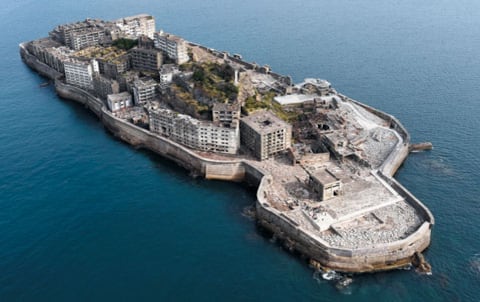South Korea’s Efforts to Address Wartime Forced Labor at Hashima Island Face Setback
South Korea has encountered a major obstacle in its efforts to secure a formal UNESCO review of Japan’s unfulfilled commitment to acknowledge the wartime forced labor at Hashima Island, a site recognized as part of the World Heritage list. The South Korean government had been pushing for accountability regarding Japan’s 2015 promise to recognize the forced mobilization of Korean laborers at the former coal mine. However, this initiative was ultimately rejected during the 47th UNESCO World Heritage Committee meeting held in Paris on July 7.
The Foreign Ministry expressed deep disappointment over the outcome, emphasizing that the decision undermines the importance of addressing historical injustices and ensuring transparency. South Korea had sought a formal evaluation of Japan’s follow-up actions, aiming to hold the country accountable for its past actions. Japan, however, opposed the move, arguing that the issue should be resolved through bilateral discussions rather than international oversight.
In response, Japan submitted a revised agenda that removed the proposal for a review. South Korea rejected this revision and requested a vote, leading to a secret ballot involving 21 member countries. The result saw Japan’s proposal pass with seven votes in favor, three against, and several abstentions. Most members supported Japan’s position, stating that the matter fell outside UNESCO’s jurisdiction and should be addressed through direct negotiations between the two nations.
Ha Wi-young, head of the Foreign Ministry’s UNESCO task force, strongly criticized Japan for failing to provide the full historical context required by the committee. The ministry stated it “regrets” the decision but remains committed to continuing efforts to urge Japan to honor its pledge and comply with UNESCO’s recommendations.
This vote significantly reduces South Korea’s chances of raising the issue again during this session, which is scheduled to conclude on July 16. Hashima Island, also known as Battleship Island, is part of Japan’s 2015 industrial heritage listing. Despite Japan’s 2015 pledge to explain the forced mobilization of Koreans, it has yet to fulfill this commitment. Instead, the country has faced criticism for downplaying issues related to wartime forced labor and comfort women, while promoting narratives that align with its own perspective.
Key Points from the Incident
- UNESCO Meeting Outcome: South Korea’s request for a formal review was rejected, highlighting the challenges in securing international support for historical accountability.
- Japan’s Stance: Japan maintained that the issue should be resolved bilaterally, rejecting the idea of an international review.
- Voting Process: A secret ballot resulted in a narrow victory for Japan’s proposal, with many members supporting the bilateral approach.
- Historical Context: Ha Wi-young emphasized the need for a comprehensive understanding of the historical events surrounding Hashima Island.
- Future Actions: Despite the setback, South Korea remains determined to continue pressing Japan for compliance with its commitments and UNESCO guidelines.
The incident underscores the complex relationship between South Korea and Japan, particularly concerning historical grievances. It also highlights the limitations of international bodies like UNESCO in addressing sensitive historical issues that involve national narratives and political tensions. As both countries navigate these challenges, the path forward remains uncertain, with the need for continued dialogue and mutual respect being essential for any resolution.







